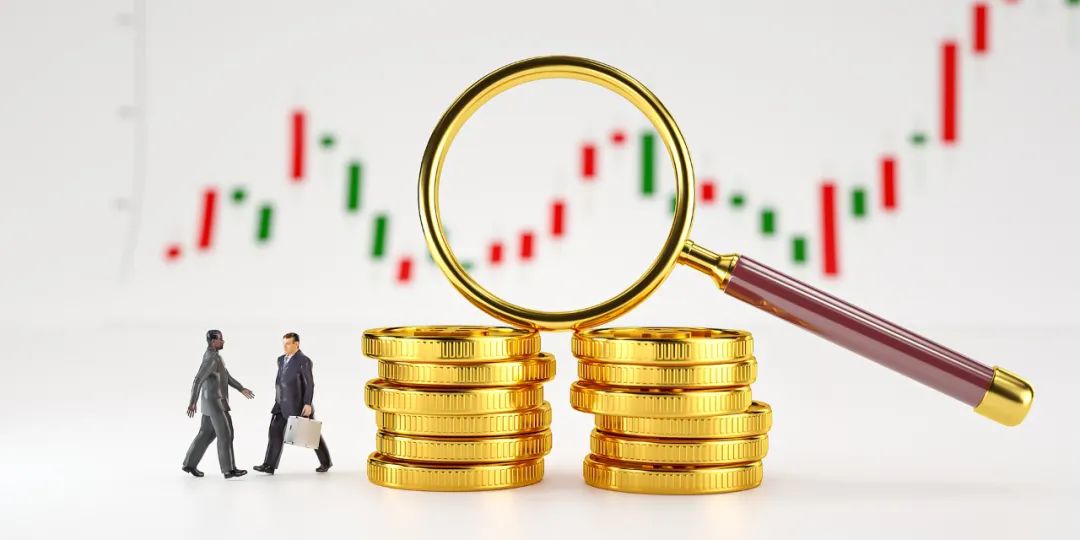
定义
The full name of the SAFE agreement is Simple Agreement for Future Equity, which is an investment agreement signed by an investor with a target company or original shareholder in exchange for equity in the target company. Different from the traditional equity investment agreement, the SAFE agreement does not require the target company to immediately cash out the equity to investors, but only when the company formally conducts A round of financing or equity financing that meets the contractual conditions and confirms the company's valuation (Qualified Financing). Convert the previous investment into equity in the company according to the terms agreed in the agreement. At the same time, unlike Convertible Note, SAFE agreements usually do not set interest.
SAFE Characteristics of the agreement
SAFE协议的特点Characteristics of the ageement

Since the future company (relatively uncertain state) equity is agreed and no interest is involved, the SAFE agreement does not require very complicated negotiation of agreement terms like traditional equity investment agreements, and usually does not require lawyers to conduct due diligence, so it can Save the time cost of financing and simplify the financing process. In addition, the founder team of the company does not need to dilute the equity immediately after obtaining the investment, which is beneficial for the founder team to firmly grasp the control of the company in the early stage, and the company's book equity structure will not appear very difficult due to the signing of multiple SAFE agreements in the early stage. Scattered, which is conducive to the subsequent A or B round of financing. Based on the above characteristics, the SAFE protocol is usually used for small financing (usually less than 1 million) in seed rounds or angel rounds of startups, and it is very frequently used in technology startups in Europe and the United States. In practice, startups often sign different SAFE agreements with multiple angel investors in order to quickly obtain funding at the start-up stage of the company. In addition, in the blockchain industry, a variant of the SAFT protocol (Simple Agreement for Future Token) based on the SAFE protocol has also been developed, that is, the investment of the early investors will be cashed in a certain number of corresponding tokens after the blockchain project is launched.
SAFE Some key terms of the agreement

SAFE agreements are usually divided into Contract Background, Basic Definition, Conversion Events, Company Representations, Investor Representations, Termination, and some There are several parts of common general clauses such as application of law and dispute resolution (Miscellaneous/Boilerplate). Each part has corresponding clauses to stipulate the rights and obligations of both parties. Some of the SAFE-specific term concepts are explained below:
01 Valuation Cap
Since in the SAFE agreement, the investor will invest a certain amount of capital into the company's operations, and because the company has not determined the valuation, it can exchange for an uncertain amount of equity return, so the investor needs to determine in the SAFE agreement the amount that can actually be obtained in the future. Amount of equity. One way to do this is to set valuation caps. The upper limit of valuation means that, after the company is determined to conduct A round of financing or other financing activities to determine the company's valuation in the future, the investors of the SAFE agreement do not calculate the equity share of their investment in the company based on the actual valuation of the company, but instead use the company's actual valuation. The set valuation ceiling is calculated.
For example, Investor A invests 200,000 yuan in the company, and the SAFE agreement stipulates that the upper limit of the valuation is 2 million yuan. In the case of setting this investment cap, Investor A can at least obtain 200,000 divided by the 2 million valuation cap, or 10% of the company's equity, if the company determines the valuation and determines the value of a single share. After that, the company raised 1 million yuan to another investor B to sell 10% of the shares at a valuation of 10 million yuan, a total of 1 million shares, worth 1 yuan per share. This act of financing to B determines the company's valuation and the value of each share, which triggers A's SAFE agreement conversion conditions. However, when A calculates his own share of equity, he calculates the company's valuation and the price of his own shares based on the upper limit of valuation of 2 million yuan. Therefore, the actual share of equity that A can obtain after the conversion is 200,000 yuan of his investment. Divide by the valuation cap of 2 million yuan, which is 10%, not the proportion of its 200,000 yuan investment in the actual valuation of 10 million yuan. Correspondingly, the price of Investor A's investment in the conversion equity is 0.2 yuan per share, instead of 1 yuan per share for Investor B.

02 Pre-Money / Post-Money Valuation Cap
Strictly speaking, the valuation cap described above should be called the post-money valuation cap (Post-Money Valuation Cap), that is, the valuation cap corresponds to the company’s valuation determined after subsequent financing to Investor B, so the signing of the share of equity that SAFE investors with post-investment valuation caps can obtain during equity conversion is relatively certain. It should be noted that the company's behavior of accepting investment itself will cause the company's valuation to change. For example, the company's own valuation is 9 million yuan, and the company's valuation becomes 10 million yuan after accepting an additional investment of 1 million yuan. Therefore, when setting the valuation cap, it is necessary to consider whether the valuation cap is the valuation cap before the subsequent investment (Qualified Financing) or the valuation cap after the investment.
For example, in order to raise 1 million yuan from Investor A, the valuation cap agreed in the SAFE agreement signed with Investor A means that the pre-money valuation cap (Pre-Money Valuation Cap) is 4 million yuan, which means that the company is in the upper limit of the valuation before accepting the investment of Investor A is 4 million yuan, and the upper limit of the valuation after accepting the investment is 5 million yuan, then the share of equity that A can convert is 20% of the investment of 1 million yuan divided by 5 million yuan, instead of 1 million yuan directly divided by 25% of the pre-valuation investment cap of 4 million yuan.
However, it should be noted here that it is possible that the company will sign SAFE agreements with multiple investors, so in the end, when the equity is converted, the actual valuation of the company is not only the upper limit of the valuation agreed when A signed the SAFE agreement of 4 million yuan plus The investment amount of A is 5 million yuan after 1 million yuan, and it may be necessary to superimpose the investment of many other SAFE investors. For example, at the same time, two other investors B and C also invested 1 million yuan through SAFE, and investor D also invested 1 million yuan in the follow-up financing (Qualified Financing) and triggered the conversion conditions of the SAFE agreement, then A in the future, the share of equity that can be accounted for in the actual conversion of equity should be divided by 1 million yuan invested by 8 million yuan (pre-investment valuation cap of 4 million yuan plus its own investment of 1 million yuan plus BCD’s total investment of 3 million yuan), that is, 12.5% in the end, instead of the 25% mentioned above. It can be seen that the share of equity that an investor who has signed the pre-investment valuation cap can obtain in the subsequent equity conversion is not determined, but can only be determined based on the comprehensive calculation of the investment situation of all other investors after the SAFE agreement is signed.

03 Discount Rate
In addition to setting an investment cap, investors can also use a discount rate to determine the share of equity they can acquire in the future. Discount rate means that in the process of converting investment into equity in the future, investors can convert previous investment into equity at a relatively favorable discount price. For example, Investor A invests 200,000 yuan in the company, and the discount rate is 50% according to the SAFE agreement. After that, the company raised 1 million yuan to another investor B to sell 10% of the shares at a valuation of 10 million yuan, a total of 1 million shares, worth 1 yuan per share. This act of financing to B determines the company's valuation and the value of each share, which triggers A's SAFE agreement conversion conditions. When calculating the convertible equity share of A’s investment, A calculates the value of each share at a discount of 0.5 yuan, or 50%, so the equity that it can obtain is 200,000 yuan divided by 0.5 yuan, that is, 400,000 shares, accounting for the company’s equity share 4%.
04 Most Favourable Nation Clause
In addition to the above terms expressly agreeing on equity conversion conditions, the investor and the company can also sign a most-favored treatment clause, that is, it is agreed that if the company enters into other SAFE agreements, the investor's equity conversion conditions, such as the upper valuation limit or discount rate, are preferred. If the conditions agreed in this SAFE agreement are met, the investors of this SAFE agreement will automatically apply these more favorable conditions when converting equity.
议需注的问题
Problems needing attention in using SAFE protocol

01 The Founder's Agreement to Dilute Equity
Theoretically, the SAFE agreement dilutes the original equity of the founder of the company.Therefore, before the company signs the SAFE agreement with other investors, the company should form an inter-shareholder agreement on how to dilute the equity between the founding shareholders, and form an effective shareholder meeting resolution,to reach unanimous corporate motions, thereby reducing subsequent disputes and other legal issues that may arise.
02 Coordination Between Different SAFE Protocols
Although the SAFE agreement can agree on different conditions as the triggering event for equity conversion (Milestone for Qualified Financing), but usually all SAFE agreements will be triggered during the formal A round of financing, so it is very likely that all SAFE agreements will be within the same time period. Investors have the right to actually obtain equity according to the agreement. Since the company is not obliged to disclose the investment behavior of the investors of the previous SAFE agreement, in the equity conversion, it is very likely that there will be conflicts of rights and obligations between different SAFE agreements. Therefore, in the process of signing SAFE agreements with different investors, it is necessary to have the awareness of coordinating and coordinating the equity structure of all investors and related designs, so as to avoid the founding shareholders unable to resolve these conflicts, or to reduce the uncontrolled signing of SAFE, resulting in the risk of excessive dilution of equity shares and excessive loss of control.
© Beijing JAVY Law Firm Beijing ICP Registration No. 18018264-1